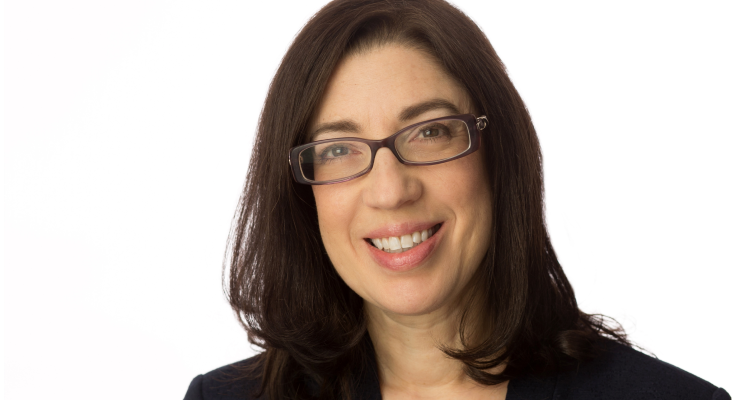Is there a way to start a retirement account with only a few hundred dollars, then add to the account each payday?
-Dave
So many people put off saving for retirement because they feel like they can’t contribute enough or don’t have a big enough “down payment.” But the truth is that saving even very small amounts regularly is a great way to get started, and the sooner the better. Your future self will be grateful that you’ve done this.
You’ll start by opening a tax-advantaged retirement account such as an IRA (individual retirement account) or a Roth IRA. Both types of accounts help you put away money for retirement without having to worry about paying taxes on the account earnings. That lets your money grow faster than it otherwise would.
When you’re putting away money for the future, time is your best friend. The more time left, the more your money will be able to grow on its own – that’s the magic of compounding. And you’ll never have more time on your side than you do right now.
For more help determining how to invest for retirement, consider matching with a vetted financial advisor for free.
You don’t need thousands of dollars to open a retirement account. In fact, many institutions will let you open an account without depositing any money. That way, when you are ready to contribute, you won’t have to first start the process of creating an account.
Be aware, though, that there may be maintenance fees or other charges for having a zero-dollar balance account. Check your agreement to find out whether you’ll be charged fees. Another possible caveat: Some institutions will require regular deposits to allow the account to stay open.
What If I Can Only Make Small Contributions?
The size of your contribution is less important than the fact that you’re making one. Even small amounts – $5 or $10 per week – can add up to thousands of dollars over time. Start with whatever you can and increase your contributions as you’re able.
What If I Can’t Contribute Regularly?
Making contributions whenever you can helps build your retirement account, though not quite as quickly as consistent contributions could. It’s better to contribute regularly – even very small amounts – when you can. But when that’s not possible, adding to the account as you’re able will still help it grow. Any contributions are better than none.
What’s an IRA?
An IRA, or individual retirement account, is exactly what it sounds like: A retirement account that you can set up for yourself (as opposed to joining a group plan, like a 401(k) through work). These accounts come with special tax advantages that make them different from regular savings accounts. There are two types of IRAs, traditional and Roth, and their tax benefits differ.
For both types, there’s no minimum contribution requirement. But both come with maximum annual contribution limits. For 2023, it’s $6,500. If you’re over age 50, you can also make an annual catch-up contribution of $1,000.
Traditional IRA
A traditional IRA offers a current tax deduction for contributions, plus tax-deferred growth on earnings. You don’t pay tax on any of the money in your traditional IRA until you take it out. If you wait until age 59 1/2, your withdrawals will be taxed at your regular income tax rate. But if you take early withdrawals (before you reach age 59 1/2), you’ll pay an additional 10% penalty. Also, once you reach legal retirement age, you’ll have to take required minimum distributions (RMDs) from your traditional IRA.
Roth IRA
A Roth IRA works almost opposite to the traditional version. You don’t get a current tax break on your contributions. But as long as you follow the rules, you’ll never pay tax on any of your withdrawals. That means all the earnings in your Roth IRA will be tax-free. Since you’ve already paid tax on your contributions, you can withdraw them at any time with no tax effect. However, if you withdraw any earnings before age 59 1/2 or before the account has been open for at least five years, you may have to pay regular tax plus the 10% penalty.
Note: High earners may not be able to contribute to a Roth IRA. If you’ve earned more than $144,000 for single filers or $214,000 for married filing jointly in 2022, you can’t contribute directly to a Roth IRA.
Which Type of IRA Is Better?
That depends on your circumstances. But generally speaking, Roth IRAs can provide more significant long-term tax benefits for many people as well as allow you current access to a portion of the money penalty-free if you need it.
When Can I Start Investing My IRA Funds?
While you may be able to open and fund your IRA with very little money, many institutions require a minimum balance for investing that money. Until you’ve hit that minimum, your money will either earn nothing or savings-account level interest.
What to Do Next
You can absolutely open a retirement account with little or no money. And you can add to it whatever you can afford, whenever you can afford to. The sooner you get started, the more your money will work for you, bringing you closer to a secure well-funded retirement.
Michele Cagan, CPA, is a SmartAsset financial planning columnist and answers reader questions on personal finance and tax topics. Got a question you’d like answered? Email AskAnAdvisor@smartasset.com and your question may be answered in a future column.
Please note that Michele is not a participant in the SmartAdvisor Match platform. She has been compensated for this article.
Tips for Planning for Social Security
- If you have questions specific to your Social Security strategy, a financial advisor can help. Finding a qualified financial advisor doesn’t have to be hard. SmartAsset’s free tool matches you with up to three financial advisors who serve your area, and you can interview your advisor matches at no cost to decide which one is right for you. If you’re ready to find an advisor who can help you achieve your financial goals, get started now.
- When it comes to Social Security, you can’t afford any missteps. In determining when to claim benefits, it’s helpful to use a Social Security calculator to estimate the amount to which you’re entitled.
Photo Credit: ©iStock.com/Szepy, ©iStock.com/damircudic


